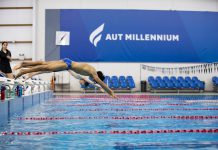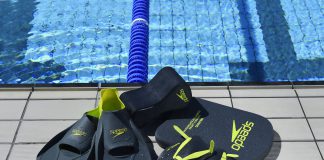Pain in your upper back can be caused by many things. If you sustain an injury, it may result in a sprain to the rib as it inserts on to the spine, otherwise known as the costovertebral joint. You can pull a muscle, fracture a rib or even sustain a disc injury here (although these are fairly rare). By and large, the patients we treat for pain in the upper back are not subsequent to an injury. Mostly we see this pain related to sitting or sustained positions. So, what can you do about it?
1. Posture
There is no such thing as the perfect posture. And if there were, if you did it for 8 hours in front of your desk, you’d probably still get sore. As some people say, “the best posture is the next one”. Having said this, I believe that keeping muscles in their shortened or lengthened position for a sustained period of time is not very clever and will probably not only change their length over time but also create pain sooner. So as a general guide, sit on the bones in your bottom so you are not tilting your pelvis back too much. Sit as tall as you comfortably can but do not tense your whole body, soften it. And try to widen your shoulders which will open your chest up and activate the muscles around your upper back.
2. Move
As I said above, “the best posture is the next one”. You need to keep moving! Our bodies were designed for regular movement, yet our lifestyles now consider going to the gym three times a week as an “active” person. It doesn’t need to be heavy, strenuous or loaded, just keep yourself moving. If you are driving, take stops to get out and stretch. On long haul flights, be that annoying person pacing up and down around the toilets. At work, set alarms for yourself and at least once or twice an hour, get up, go to the bathroom, get a glass of water, chat to a colleague, or even just bend and stretch yourself a bit.
3. Strengthen
Exercise really does seem to be the magic key when it comes to managing ongoing persistent niggles and pain. Not only does it strengthen our muscles so they can do their job better for longer, but it seems to have a painkiller effect, so we feel less discomfort and have an improved mood. Not only does research show us time and again the benefits of working our muscles for pain relief and improved function, but I can attest to this one personally – I can feel my upper back start to get achy and tense when I haven’t exercised enough. Yoga, pilates, weights classes, resistance training with bands, and rowing can all have a very positive effect on upper back pain.
4. Strapping
Taping the upper back during the acute phase of pain can be really helpful. This is not a solution to the problem but it can give some great relief and enable you to get on with things while you strengthen and mobilise your upper back for longer term improvements. Get some kinesiotape and apply 30cm long strips from the front of your shoulders down and across your back towards the other side in an “X” shape to help offload commonly painful structures and help activate your muscles during exercise and movement.
If you are suffering from upper back pain and need a management plan set in place, come and see one of the team at Healthzone Physiotherapy. We will provide you with an assessment, and where appropriate, exercises, strapping and manual therapy to help you get back to feeling your best.
Contact HealthZone Physiotherapy today on: (09) 477 2098






































